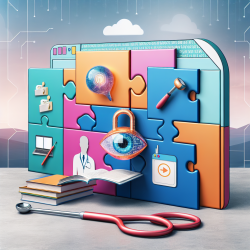As the Special Education Director for a school district, I often find myself at the intersection of education and technology, seeking ways to enhance the learning experiences of our students. A recent study titled "[M]y own pace and space, without the pressures: Online learning experiences of audiology students" provides invaluable insights into the world of online learning for audiology students. Here, I aim to distill the key findings and offer actionable strategies for practitioners looking to improve their skills or delve deeper into this area of research.
Understanding the Benefits of Online Learning
The study revealed several benefits that audiology students experienced with online learning:
- Flexibility and Independence: Students appreciated the ability to learn at their own pace and in their own space, which reduced anxiety and increased engagement.
- Cost and Time Efficiency: Online learning eliminated the need for commuting, allowing students to allocate more time to their studies and reduce transportation costs.
- Less Exhaustion: The flexibility of online learning allowed students to manage their schedules better, leading to improved sleep and reduced fatigue.
Challenges to Address
Despite the benefits, the study also highlighted several challenges:
- Connectivity Issues: Unstable internet connections and power outages were significant barriers to effective online learning.
- Limited Instructor Presence: Students felt a lack of real-time interaction with instructors, which impacted their understanding of the material.
- Time Management: The independence of online learning sometimes led to procrastination and poor time management.
- Peer Interaction: Limited opportunities for social interaction led to feelings of isolation among students.
Strategies for Effective Online Learning
To overcome these challenges and maximize the benefits, the study suggests several strategies:
- Self-Regulated Learning: Encourage students to set routines and self-discipline to manage their time effectively.
- Supplementary Materials: Utilize additional resources like YouTube videos and online platforms to enhance understanding.
- Instructor Engagement: Ensure that instructors are available for real-time consultations and provide timely feedback.
- Blended Learning: Combine synchronous and asynchronous learning modes to offer a balanced and engaging learning experience.
- Provision of Resources: Provide necessary tools such as internet data bundles to ensure uninterrupted learning.
Encouraging Further Research
While this study provides a robust framework for understanding and improving online learning for audiology students, there is always room for further research. Practitioners are encouraged to explore these findings in their own contexts and contribute to the growing body of knowledge in this field.
To read the original research paper, please follow this link: [M]y own pace and space, without the pressures: Online learning experiences of audiology students.










